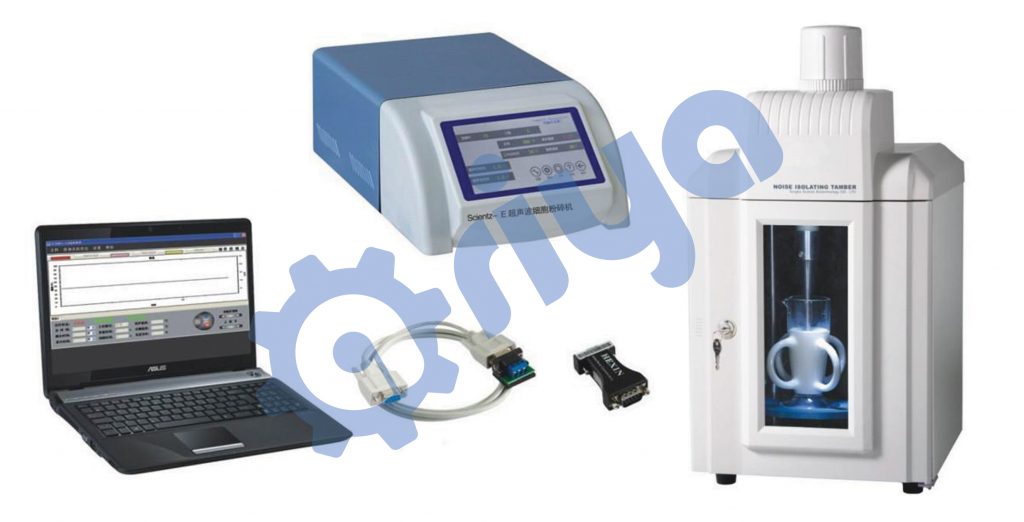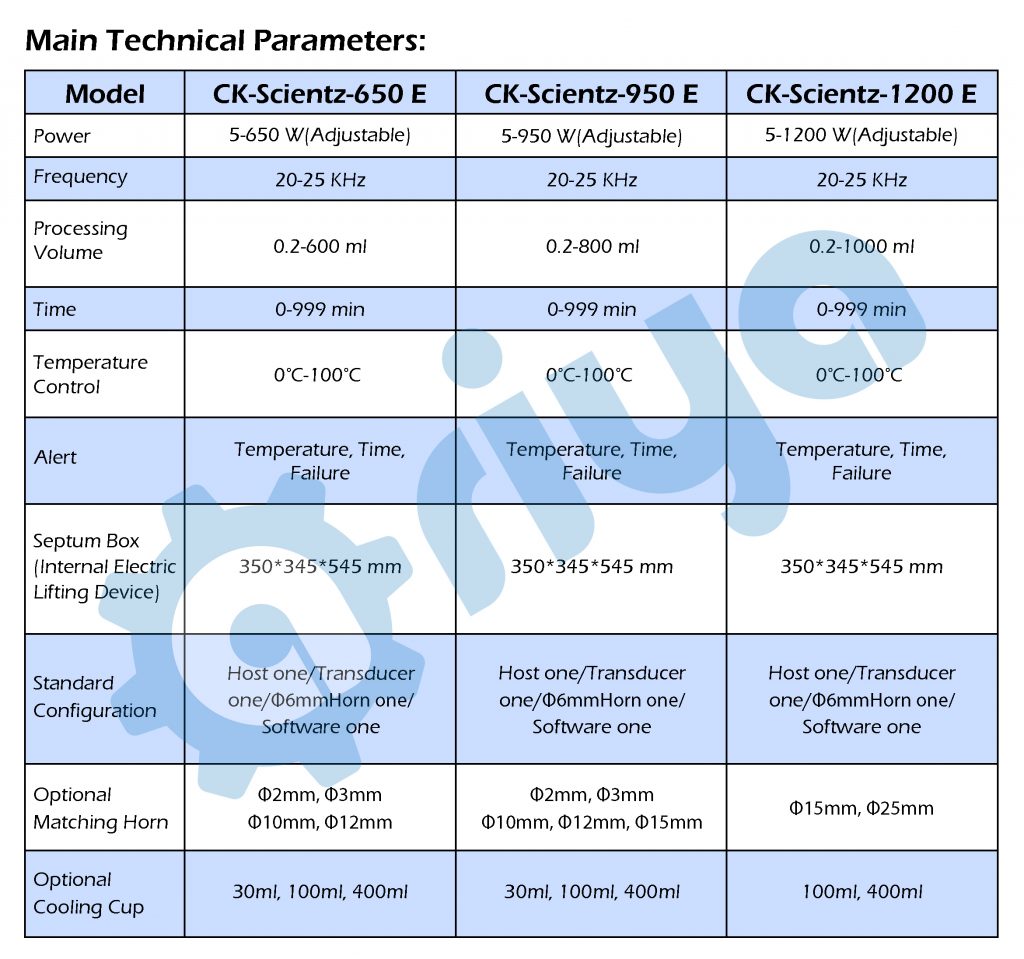Temperature Homogenizer
Scientz-650E/950E/1200E Intelligent Ultrasonic Homogenizer

Description:
Ultrasonic cell pulverize uses the dispersion effect of ultrasonic waves in the liquid to cause cavitation of the liquid, thereby breaking the solid particles or cell tissue in the liquid. The ultrasonic cell pulverize consists of two parts: an ultrasonic generator and a transducer.
The ultrasonic generator converts the utility power into a 20-25 KHz alternating power supply transducer. The zirconium titan ate piezoelectric vibrator is the heart of the transducer. It is elastically deformed with the alternating voltage at a frequency of 20-25 KHz, and the transducer is subjected to longitudinal mechanical vibration.
The vibration wave generates a cavitation effect by the titanium alloy horn immersed in the biological solution, and the biological particles in the excitation medium vibrate violently.
Features:
1. Combined with microcomputer control, using DSP plus ARM technology, the performance is more stable and the data is more precise.
2. It has the functions of options, temperature measurement, automatic frequency tracking, impedance adaptation, protection, and so on.
3. With wireless or RJ-45 interface, it can communicate with host computer. It can control network and print remotely.
4. Gap / continuous working mode, pulse 0.1-99.9S tunable
5. Data storage 20 groups, user password landing protection
6. 7 inch TFT large screen display temperature, power, amplitude and pulse mode and work / gap time, touch control
7. It has self-diagnostic function, automatic program error correction, overload protection and over temperature protection display.
8. The loudspeaker box has increased the functions of illumination, sterilization, automatic lifting, door locking and so on. The sound proof box can be put on the main engine and save time
Application:
Life science: the lysis, fragmentation, leaching and extraction of bacteria, viruses, spores and other cell structures, extraction of DNA and protein in the cells of animals and plants, pruning DNA/RNA, and chromatin immunoprecipitation technology.
Material chemistry: dispersion and cracking of nanomaterials such as carbon nanotubes, graphene and other materials, such as pyrolysis, emulsification, homogenization and fragmentation of particles of homogeneous soil, rock samples, nonferrous metals and rare earth particles. In addition, it can be used for the dispersing and extraction of Chinese herbal medicine. It can be used for the dispersion, emulsification, homogenization and acceleration process of other samples, and can also be used for sample pretreatment in chemical, medical, archaeological, geological, marine and other fields.

